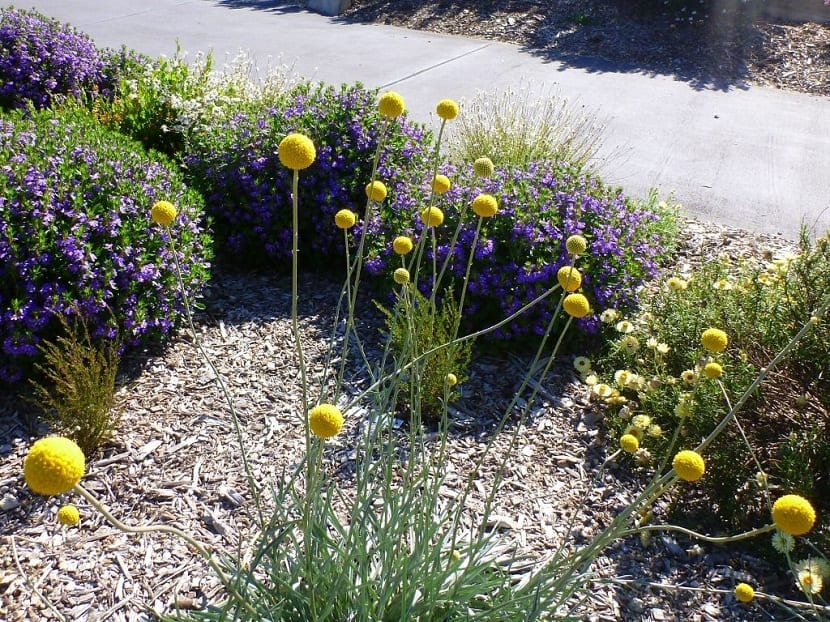
The Craspedia globosa, is an ornamental plant highly valued for the production of beautiful flowers reminiscent of golf balls and that they are usually used fresh in the preparation of bouquets for the bride and once dry for different floral compositions.
The Craspedia, with scientific name Pycnosorus globosus It is a perennial plant that belongs to the same family of daisies, the Asteraceae family. This precious flower is native to the South Pacific and common in its natural state in Tasmania, Australia or New Zealand, but for several years it has been cultivated in many European countries.
Features

The Craspedia is a plant that generates thick bushes of approx. 65 cm in circumference and has a strong and robust root system.
The lance-shaped or slightly toothed leaves are covered with a light fluff in a lovely grayish-green hue, very common in most plants of this family.
During flowering, slender, long stems emerge covered with a soft fluff, on which some imposing inflorescences in the shape of a globe of approx. 3 cms. and yellow.
Each flower is made up of a large number of small yellow flowers called fringes, one of the preferred foods for various pollinating insects like bees or butterflies.
This beautiful plant offers us flowers that in addition to being beautiful and very showy have the characteristic of lasting a long time in perfect condition, obviously on the plant, but also cut, and can be in perfect condition for up to two weeks.
Its flower is widely used for its dry use, and this allows us to enjoy it for years.
Farming
The Craspedia usually blooms in summer and gives us an abundant flowering and continues from June to the end of September. In hot countries, this flowering lasts practically the whole year.
This beautiful plant that has seeds very similar to those of chamomile, small, elongated and gray, grows quite well in shady areas, but to offer abundant flower production it must be planted in full sun. It perfectly accepts the intense heat of summer and resists the low temperatures of winter, supporting up to - 7 ° C.
In areas with very cold and icy winters, it is advisable to protect the root system with a mulch, dried bark or leaves.
It is important to plant this species in a quality substrate mixed with sand and peat, with abundant organic substance and good drainage, since in its original state it is used to very loose and dry soils.
Due to its origin in areas with little rainfall, it perfectly supports periods of more or less prolonged drought, so the rainwater will be more than enough to satisfy its thirst. It is important not to over water it especially in the flowering period.
We can multiply the plant in different ways, sowing the seeds, or planting a tuft that we will have separated from the original plant.

Siembra
Sowing is simple and similar to plants of the same species. It must be done between March and May, in seedbeds that we will keep moist until the new buds appear. When the seedling can be managed, we will move to a larger pot or to the garden floor where we are going to place it.
As well we can create new plants with a tuft that we will divide carefully of an existing plant. For that we must remove it from the earth and divide it into different portions with roots. We will plant them and water them generously. In this way, we get the following summer to give us their precious flowers.
This shrub does not require pruning, we just have to remove the dry leaves, and cut the flowers that we want to use to dry or place them in a bouquet. It is a very resistant plant that needs little care. It is very rustic and is little attacked by common pests such as powdery mildew or different parasites.
It is important not to flood the roots and in this way we will have a beautiful plant full of flowers year after year.